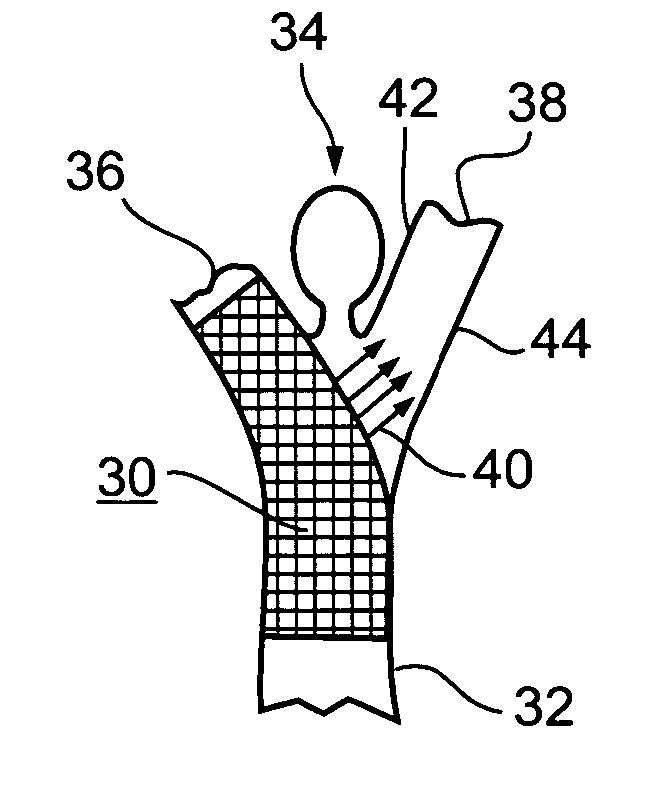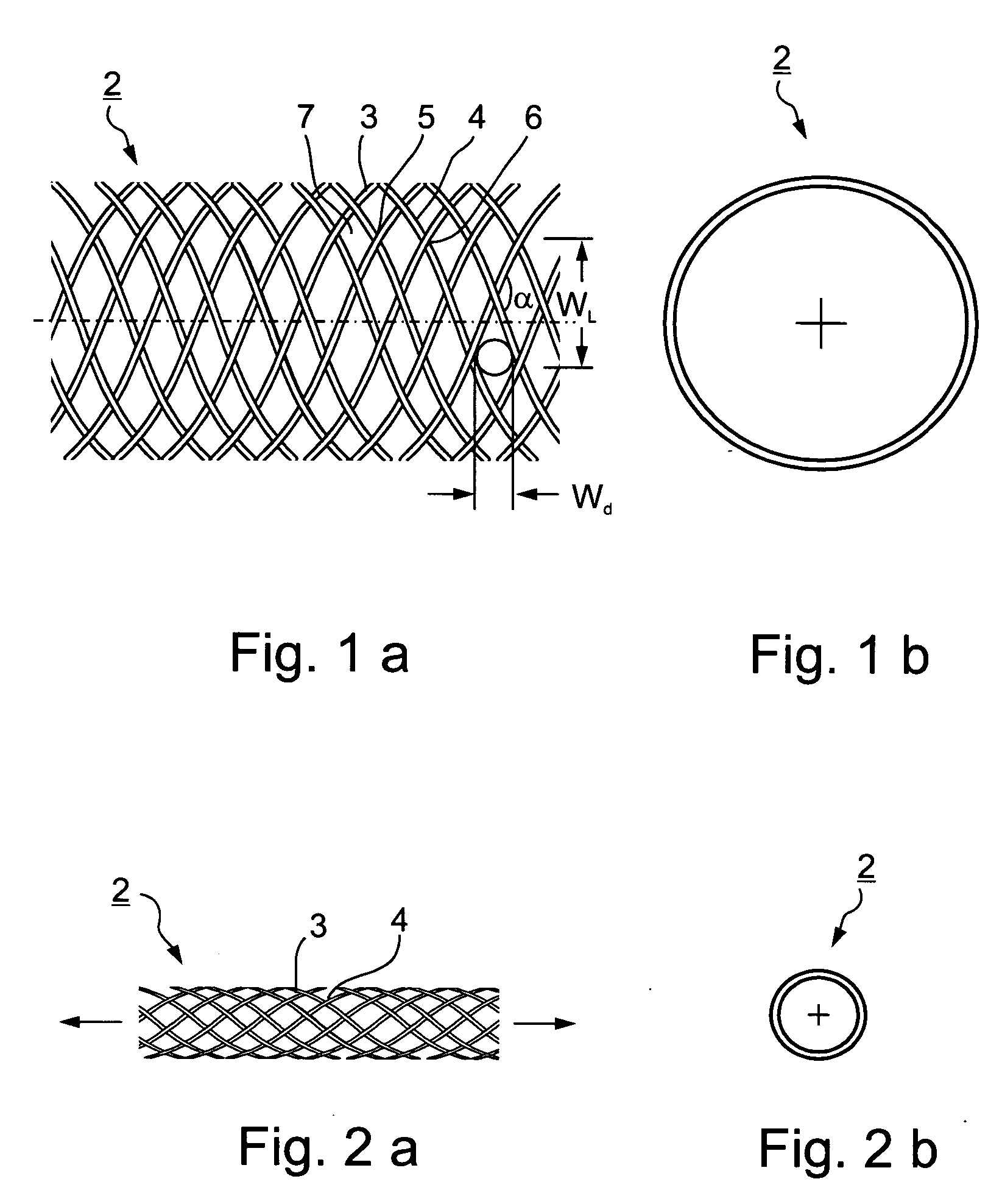Implantable intraluminal device and method of using same in treating aneurysms
an intraluminal device and aneurysm technology, applied in the field of intraluminal devices, can solve the problems of inability to achieve the desired radio-opacity characteristic, delay or inpracticality of surgical procedures, and the short service life of the procedure, so as to achieve the structural stability and/or desired radio-opacity characteristic, reduce the effect of blood flow and easy manipulation through the blood vessel
- Summary
- Abstract
- Description
- Claims
- Application Information
AI Technical Summary
Benefits of technology
Problems solved by technology
Method used
Image
Examples
Embodiment Construction
[0049]FIGS. 1a and 1b illustrate an intraluminal device, therein generally designated 2, constructed in accordance with the present invention in its implanted condition which it assumes in a blood vessel after deployment therein; whereas FIGS. 2a and 2b illustrate the intraluminal device 2 of FIGS. 1a and 1b in the contracted or stressed condition of the device which it assumes to facilitate its manipulation through the blood vessel to the deployment site.
[0050] As shown particularly in FIG. 1a, the intraluminal device includes a plurality of filaments of elastic or non-elastic bio-compatible material, metal or plastic, extending helically in an interlaced manner to define a braided tube. Thus, shown in FIG. 1a are a first group of filaments 3 extending helically in one direction, and a second group of filaments 4 extending helically in the opposite direction, with the two groups of filaments being interwoven such that a filament 3 overlies a filament 4 at some points as shown at 5...
PUM
 Login to View More
Login to View More Abstract
Description
Claims
Application Information
 Login to View More
Login to View More - R&D
- Intellectual Property
- Life Sciences
- Materials
- Tech Scout
- Unparalleled Data Quality
- Higher Quality Content
- 60% Fewer Hallucinations
Browse by: Latest US Patents, China's latest patents, Technical Efficacy Thesaurus, Application Domain, Technology Topic, Popular Technical Reports.
© 2025 PatSnap. All rights reserved.Legal|Privacy policy|Modern Slavery Act Transparency Statement|Sitemap|About US| Contact US: help@patsnap.com



